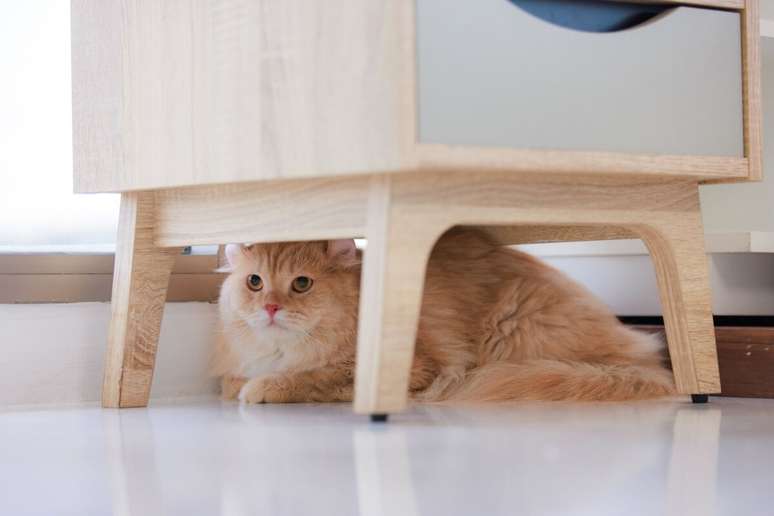Understand the signs your new feline companion may show when he arrives home and how to help him adjust
Adopting a cat brings joy and love to both the animal and the owner. However, it is natural that, once arrived in a new environment, the feline feels strange at home and presents some behaviors that may seem unusual. However, they are normal during the adaptation phase and, with patience and attention, tend to improve or disappear over time. Below, take a look at some of them and what to do!
1. Hide
It is common for newly adopted cats to look for hiding places in the house, such as under the bed or behind furniture. This behavior refers to a way of feeling safe while gradually exploring the new environment. To help, avoid forcing the pet come out of hiding and let him explore the space at his own pace.
“Changing environments can be challenging cats. They need time to get used to it. If this is the case, allow the animal to hide, providing safe and familiar spaces, this will make the pet pet feel comfortable and start, little by little, to explore and interact with the new home”, explains Marina Tiba, veterinarian and product manager of the Companion Animal Unit at Ceva Saúde Animal.
2. Excessive meowing
Your cat may meow more than usual during the first few days in their new home. This could be a sign of anxiety or a form of communication, expressing that they are trying to understand and get used to the new environment. When this happens, offer affection and attention, but do not overdo it so as not to reinforce the behavior. Little by little, the meowing tends to decrease as the cat feels more comfortable.
3. Lack of appetite
Loss of appetite is another common behavior immediately after adoption. The cat may be stressed or suspicious of the new environment, which affects his desire to eat. Therefore, it is important to offer him foods that he is already accustomed to, as well as maintaining a consistent feeding routine. If the problem persists for more than two days, it is necessary to consult a veterinarian.
“If a cat goes for long periods without eating, it can develop hepatic lipidosis, an accumulation of fat in the liver cells that compromises the functioning of the organ and makes the animal seriously ill,” explains Alessandra Farias, a veterinarian at DrogaVet.
4. Night exploration
Cats are nocturnal animals by nature. In a new home, the feline can take advantage of the quiet of the night to explore. If he is very active at night, you can offer him toys interactive activities during the day to burn off energy and make it more peaceful at sunset. In addition, it is also important to provide a safe and comfortable place for the pet rest.

5. Inappropriate use of the litter box
At first, your cat may not use the litter box properly. This may be because he is not yet familiar with the location where it is located or because of the stress resulting from the change. Therefore, it is important to show him where sandbox and make sure it is in a quiet and easily accessible place. If the behavior persists, check to see if the litter box is clean or if it is better suited to another type.
6. Show affection or distance yourself
Every cat has its own personality. But, once it arrives in a new home, it can show a lot of affection or, on the contrary, distance itself from humans. Both behaviors are normal and indicate how it is processing the new situation.
“It’s a trend that everyone wants to catch. cubplaying with him all the time, interacting. We also need to understand his time. There are pets shy and others more open to this type of interaction”, analyses Jade Petronilho, veterinarian and behaviorist of pets. It is therefore important to respect your cat’s space, offering him affection when he seeks it, but also giving him time to adapt if he prefers to be alone.
Source: Terra
Ben Stock is a lifestyle journalist and author at Gossipify. He writes about topics such as health, wellness, travel, food and home decor. He provides practical advice and inspiration to improve well-being, keeps readers up to date with latest lifestyle news and trends, known for his engaging writing style, in-depth analysis and unique perspectives.








